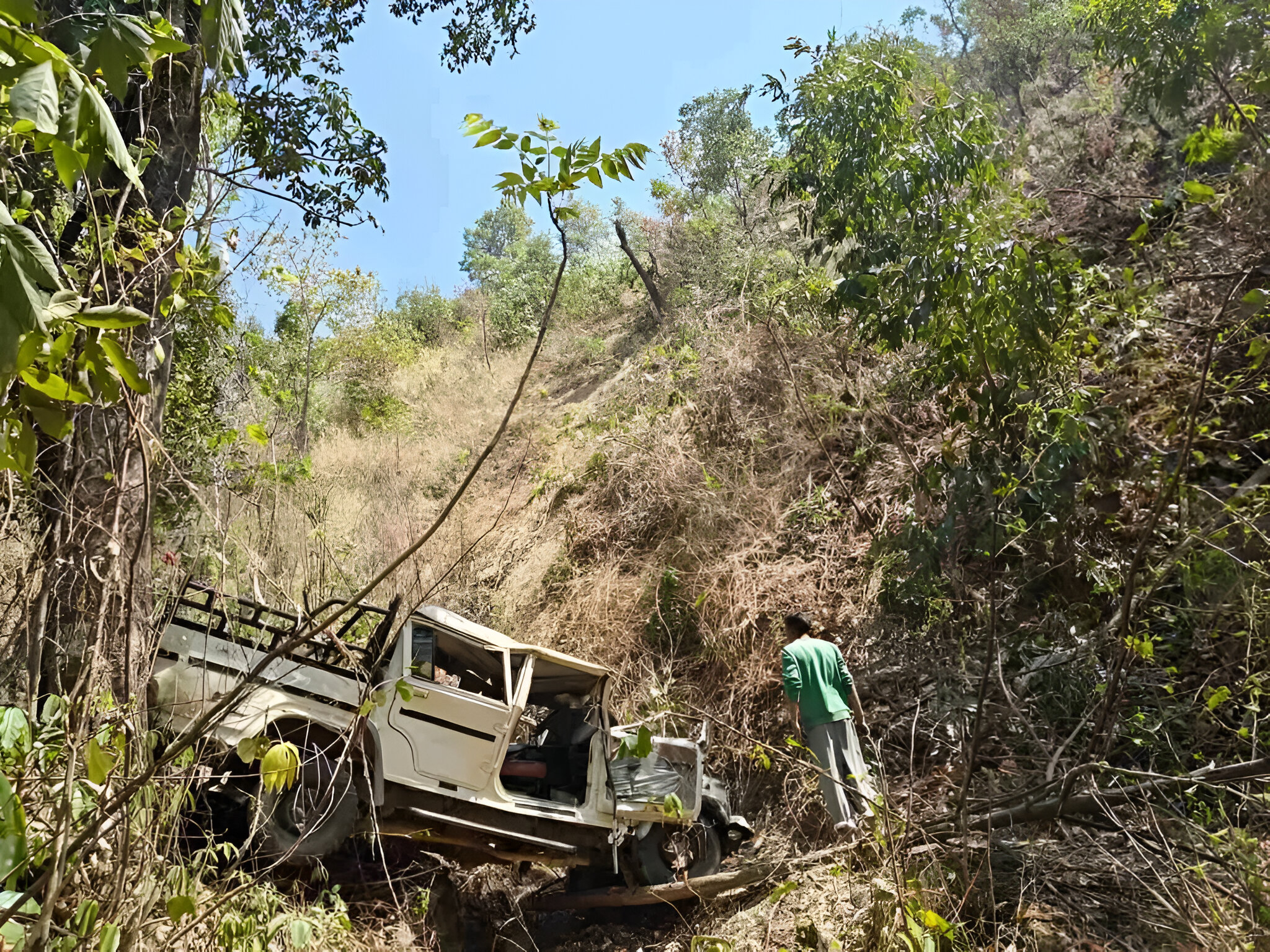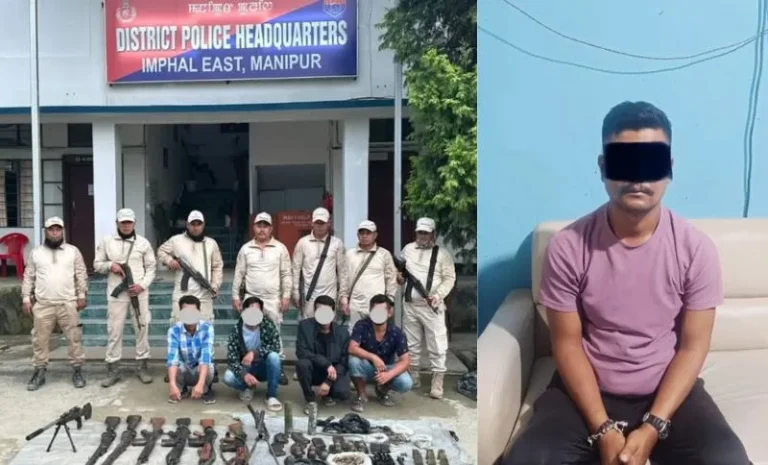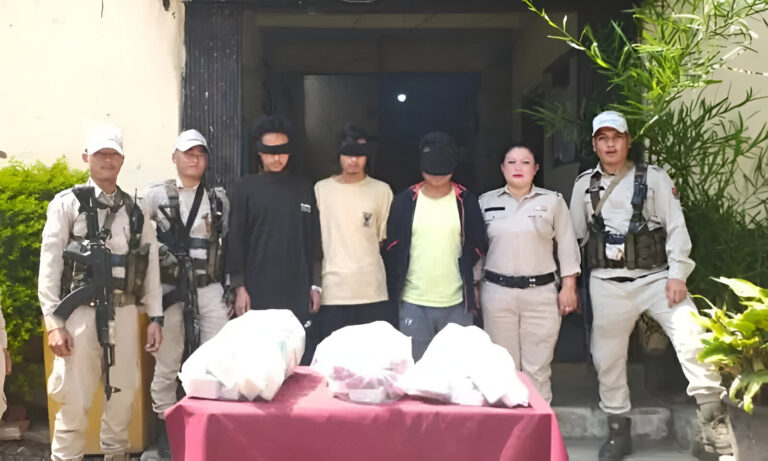Four Killed, Six Injured in Tragic Road Accident at Poi Village in Ukhrul
Manipur Road Accident in Ukhrul District: A Comprehensive Look at the Incident, Causes, and Community Impact
Welcome, dear readers! Today, we’re diving deep into a somber yet crucial topic—a tragic road accident in Ukhrul district, Manipur, that has shaken the local community to its core. We’ll take you step by step through the unfolding events, the background of road safety in the region, the immediate rescue efforts, and what the future might hold if changes aren’t made. So, buckle up as we explore every angle of this incident with a thoughtful, human touch.
Introduction
Manipur, known for its rich cultural heritage and scenic landscapes, is also a region where road conditions can sometimes be as challenging as its winding mountain paths. Recently, the tranquil roads of Ukhrul district turned into a scene of devastation when a road accident resulted in four fatalities and left six people injured. This incident is not just a headline—it’s a wake-up call about the broader issues affecting road safety in this part of India.
Picture driving on a serene, picturesque road that suddenly transforms into a nightmare due to poor infrastructure and unforeseen hazards. Unfortunately, for the victims and their families, this is a harsh reality. In this article, we aim to unpack the layers behind the accident, discuss the immediate response, and look at what measures could help prevent such tragedies in the future.
Background of Road Safety in Manipur
Road safety is a matter of life and death, especially in regions where the terrain and infrastructure present unique challenges. Manipur, with its narrow roads, abrupt turns, and unpredictable weather, has long struggled with road safety issues. Over the years, there have been several incidents that highlight the urgent need for robust safety measures and improved road maintenance.
The Landscape of Manipur’s Roads
Imagine navigating a maze where every turn holds a potential hazard. That’s what driving in some parts of Manipur can feel like. The roads often cut through hilly terrains, making them prone to landslides and waterlogging during the monsoon season. Additionally, inadequate signage and the absence of proper maintenance further compound these challenges, increasing the likelihood of accidents.
Previous Incidents and Lessons Learned
Manipur isn’t new to road accidents. Historical data shows a pattern of recurring mishaps that have raised alarms among local residents and government officials alike. Each incident, while tragic in its own right, offers a lesson—a reminder of the pressing need for improved road infrastructure, stricter enforcement of traffic rules, and better emergency response systems.
Have you ever wondered why some roads seem to be a magnet for accidents? In many cases, it’s a combination of human error, poor infrastructure, and sometimes, a dash of bad luck. The Ukhrul incident is a grim example of how these factors can converge to create a catastrophe.
Detailed Account of the Ukhrul Road Accident
On that fateful day in Ukhrul district, a series of events unfolded that left the community in shock. While the exact sequence of events is still under investigation, preliminary reports suggest that the accident was a result of multiple factors coming together in a disastrous chain reaction.
What Happened?
According to eyewitnesses and initial statements from local authorities, the accident occurred on a busy stretch of road that is often used by commuters, local vendors, and tourists alike. A vehicle, whose driver may have lost control due to slippery road conditions or mechanical failure, collided with another vehicle traveling in the opposite direction. The impact was severe, leading to an immediate halt in the flow of traffic and a scramble for emergency help.
The Tragic Toll
In the blink of an eye, four lives were lost, and six individuals sustained injuries ranging from minor to critical. Families in the region are mourning the loss of their loved ones, and the injured are receiving urgent medical care. It’s heartbreaking to think of the dreams and futures cut short in such a tragic manner.
Contributing Factors
What could have led to such a devastating accident? There are several contributing factors to consider:
- Road Conditions: Poor maintenance, inadequate lighting, and lack of proper road markings can turn a routine drive into a risky endeavor.
- Weather: Sudden changes in weather can make roads slippery, reducing traction and making it difficult for drivers to maintain control.
- Vehicle Maintenance: Sometimes, the issue might lie with the vehicle itself—a failure in brakes, tires, or steering mechanisms can spell disaster.
- Driver Behavior: Over-speeding, fatigue, or distraction can exacerbate the situation, leading to errors that have fatal consequences.
Each of these factors, on its own, might be manageable. However, when they collide—quite literally—the result can be catastrophic.
Immediate Rescue and Emergency Response
In the aftermath of the accident, every minute counted. Emergency services rushed to the scene, their sirens piercing through the chaos as they worked to stabilize the injured and secure the area. Let’s take a closer look at the heroic efforts of these first responders.
Swift Action on the Ground
Within minutes of the accident, local police, fire services, and medical teams were on the scene. Their coordinated response was critical in providing immediate medical care and transporting the injured to nearby hospitals. It was a race against time to save lives, and their dedication was nothing short of heroic.
Challenges Faced During Rescue Operations
Rescue operations in areas like Ukhrul come with their own set of challenges. Narrow roads and difficult terrain can delay access to the scene, while the sheer scale of the accident requires meticulous coordination among various teams. Despite these hurdles, the emergency responders managed to work with precision and compassion, embodying the spirit of service.
Imagine the scene: flashing lights, hurried conversations, and the relentless determination of individuals committed to saving lives. The collaborative effort of these teams is a testament to the strength of community bonds in the face of adversity.
Impact on the Local Community and Families
The road accident in Ukhrul district is more than just a statistical tragedy—it’s a human one. The ripple effects of such incidents extend far beyond the immediate physical injuries. Families are grieving, communities are in shock, and a collective call for change resonates throughout the region.
Stories of Loss and Resilience
Behind every statistic, there is a story. Families have lost beloved members, and the sudden void left by these losses is deeply felt. In the local community, the pain is palpable. Neighbors, friends, and colleagues are coming together to support one another during this challenging time. It’s a stark reminder that while we may sometimes view accidents as mere events, they are in fact life-altering experiences for those involved.
A Community in Mourning
In Ukhrul, the air is heavy with sorrow. Community centers, places of worship, and local gathering spots have become venues for collective mourning and remembrance. It’s in these moments of shared grief that the strength of community spirit shines through—neighbors offering support, friends lending a shoulder to cry on, and local leaders promising to fight for better road safety measures.
When tragedy strikes, it forces us to confront our vulnerabilities. But it also brings to light the incredible resilience of the human spirit—a quality that, despite the pain, gives hope for a better tomorrow.
Government and Authorities’ Response
The immediate response from local authorities has been swift, but the incident has also sparked a broader discussion about the state of road safety and infrastructure in Manipur. What steps are being taken to ensure that such a tragedy never repeats itself?
Investigation Underway
Right after the accident, an investigation was launched to determine the exact causes and circumstances leading up to the crash. Authorities are examining everything—from the condition of the vehicles involved to the state of the road and the behavior of the drivers. This thorough investigation aims to provide a clear picture of what went wrong and to hold those responsible accountable.
Calls for Infrastructure Improvement
Local officials and community leaders have repeatedly called for urgent improvements to the road infrastructure. There’s a growing consensus that Manipur’s roads need more than just routine maintenance—they require a complete overhaul in many areas. Upgrading road surfaces, installing better lighting, and implementing robust safety measures are some of the key steps that could make a significant difference.
Policy and Enforcement Changes
In addition to physical infrastructure improvements, there is a pressing need for stricter enforcement of traffic laws. Authorities are considering measures such as increased patrols, harsher penalties for violations, and regular vehicle inspections. The goal is to create an environment where road safety is not just a priority but a deeply ingrained habit for every driver.
Imagine if every road in Manipur could be transformed into a safe passage—a place where families can travel without fear. That vision is what many local leaders and residents are striving for, and it starts with acknowledging the gaps in the current system.
Lessons and Preventative Measures for Future Road Safety
Every tragedy carries with it a lesson. While nothing can undo the loss experienced in Ukhrul, there are proactive steps that can be taken to mitigate the risk of future accidents.
Improved Road Infrastructure
Investing in road infrastructure is not just about paving new roads—it’s about creating safe, sustainable, and resilient transportation networks. This includes:
- Regular Maintenance: Routine checks and timely repairs can prevent minor issues from escalating into major hazards.
- Modern Signage: Clear and visible road signs help guide drivers, especially in areas with challenging geography.
- Enhanced Lighting: Proper illumination can make a world of difference during nighttime travel or adverse weather conditions.
Driver Education and Awareness
Often, accidents are not solely due to poor infrastructure but also because of lapses in driver behavior. Enhancing driver education programs can equip individuals with the skills and awareness needed to navigate tricky road conditions. Workshops, public service announcements, and community-led training sessions can foster a culture of safety and responsibility on the roads.
Enforcement of Traffic Regulations
Robust enforcement of traffic laws acts as a deterrent against reckless driving. With increased patrols and regular checks, authorities can ensure that drivers adhere to speed limits, wear safety gear, and maintain their vehicles in proper condition. The goal is to create an environment where every driver takes personal responsibility for road safety.
Community Involvement and Feedback
The local community’s insights are invaluable when it comes to identifying problem areas and suggesting improvements. Encouraging residents to report road hazards and actively participate in safety audits can lead to more targeted and effective solutions. After all, who better to point out the issues than those who use the roads every day?
The Road to Recovery: Rebuilding Trust and Infrastructure
In the wake of the Ukhrul accident, the path to recovery is both a physical and emotional journey. Rebuilding trust—between the community, the government, and the road infrastructure—requires commitment, collaboration, and a shared vision for a safer future.
Rehabilitating the Affected Areas
For the families directly impacted by the tragedy, recovery is not just about physical healing but also emotional support. Local authorities, NGOs, and community groups are working together to provide counseling, financial assistance, and rehabilitation services. The aim is to help those affected rebuild their lives, piece by piece, much like restoring a cherished old painting that has seen better days.
Infrastructure Overhaul as a Long-Term Solution
While immediate relief is crucial, long-term solutions require a strategic approach to infrastructure development. Investing in better roads, advanced traffic management systems, and modern safety technologies can transform the way communities travel. It’s a commitment that goes beyond quick fixes—one that promises a future where tragedies like this become a thing of the past.
Fostering a Culture of Safety
Ultimately, the journey toward safer roads in Manipur hinges on creating a culture where every individual—from government officials to everyday drivers—places a high value on safety. By integrating safety protocols into everyday practices and continuously educating the public, a significant shift in mindset can be achieved. This transformation is as much about technology and infrastructure as it is about people and their attitudes.
Final Thoughts and the Way Forward
The tragic road accident in Ukhrul district serves as a painful yet powerful reminder of the urgent need for road safety improvements. As we reflect on this incident, it’s clear that the solutions lie in a blend of immediate action, long-term infrastructure development, and a concerted effort to foster a culture of safety and responsibility.
While we mourn the lives lost and support those affected, we must also look ahead with determination. What can be done differently? How can communities work together with authorities to prevent future tragedies? The answers lie in dialogue, proactive planning, and unwavering commitment to change.
Let this incident not be in vain. Instead, let it serve as a catalyst for robust reforms—ones that ensure every journey is safe, every road is secure, and every life is valued. Together, with collective effort and a shared vision, we can transform our roads into lifelines of hope rather than harbingers of sorrow.
Frequently Asked Questions (FAQs)
Q1: What were the primary causes of the Ukhrul road accident?
A1: While the full investigation is ongoing, initial reports indicate that a combination of poor road conditions, adverse weather, and possible driver error contributed to the accident.
Q2: How did emergency services respond to the incident?
A2: Emergency responders acted swiftly, overcoming challenges posed by narrow roads and difficult terrain, to provide immediate medical care and secure the accident scene, highlighting their dedication and resilience.
Q3: What measures are being considered to improve road safety in Manipur?
A3: Authorities are exploring infrastructure improvements, stricter traffic law enforcement, enhanced driver education programs, and community engagement initiatives to reduce future accidents.
Q4: How has the local community been affected by the accident?
A4: The accident has deeply impacted local families and the community, leading to mourning, calls for better safety measures, and a collective effort to support those directly affected by the tragedy.
Q5: What long-term changes could help prevent similar accidents in the future?
A5: Long-term solutions include investing in upgraded road infrastructure, implementing advanced safety technologies, and fostering a culture of responsibility among drivers, along with continuous public education on road safety.




